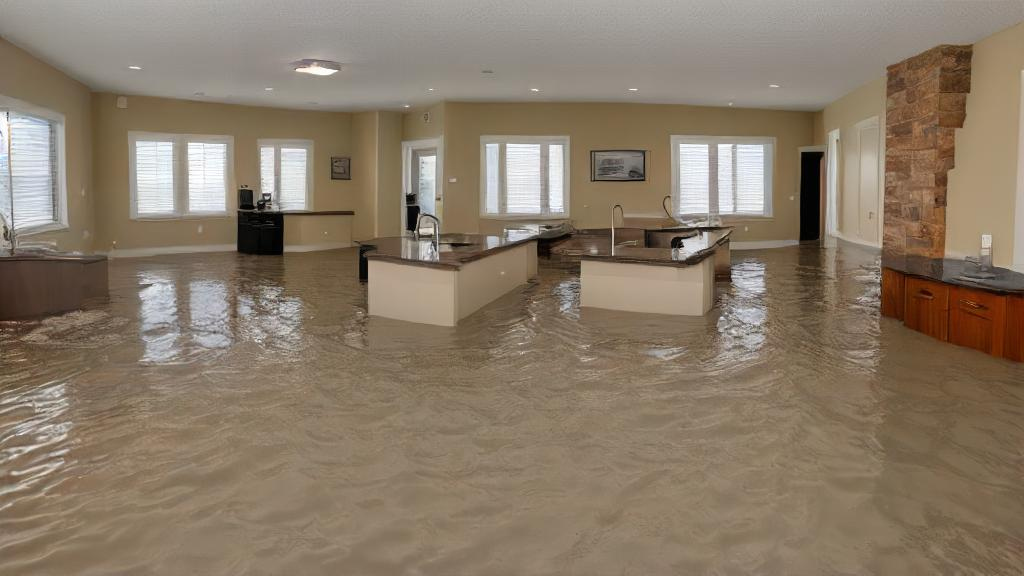Sun, surf, and sandy beaches – San Diego conjures images of a coastal paradise. But even paradise isn’t immune to the occasional downpour or plumbing mishap. When water strikes your home or business, it can quickly turn tranquility into turmoil. Don’t panic! With prompt action and the right water damage restoration company in San Diego by your side, you can weather the storm and restore your property.
This comprehensive guide equips you with the knowledge to tackle water damage confidently. We’ll explore:
- Understanding Water Damage: Different types, causes, and the importance of swift action.
- The Restoration Process: A step-by-step breakdown of what to expect from water damage restoration professionals.
- Choosing the Right San Diego Restoration Company: Crucial factors to consider when selecting a restoration service.
- Preventing Future Woes: Tips to minimize the risk of water damage in your San Diego property.
Understanding Water Damage
Water damage isn’t a one-size-fits-all issue. Here’s a breakdown of different types and their causes:
- Category 1 (Clean Water): This arises from broken pipes, overflowing appliances, or rainwater leaks. The water is generally sanitary but can still cause significant damage if left unchecked.
- Category 2 (Gray Water): This originates from sources like dishwashers, washing machines, or toilet overflows. It may contain bacteria and requires professional cleaning and sanitation.
- Category 3 (Black Water): This is the most hazardous, contaminated with sewage, floodwater, or rising tidewater. It poses serious health risks and demands immediate professional intervention.
The severity of damage depends on the water source, the extent of exposure, and the time it takes to address the issue.
Also Read: Water Damage Restoration Ceiling: A Comprehensive Guide
The Importance of Swift Action
Water damage is a time-sensitive matter. Here’s why immediate action is crucial:
- Mold Growth: Stagnant water creates a breeding ground for mold spores, posing health hazards and leading to structural damage.
- Material Deterioration: Prolonged exposure weakens wood, drywall, and other building materials, requiring costly replacements.
- Hidden Damage: Water can seep into concealed areas, leading to unseen damage that worsens over time.
By taking immediate action, you can minimize the extent of the damage and prevent secondary issues like mold growth.
The Water Damage Restoration Process
Water damage restoration is a multi-step process typically undertaken by experienced professionals. Here’s a general outline:
- Emergency Response: The restoration company will assess the situation, identify the water source, and take steps to stop further water intrusion.
- Water Extraction: Professionals use powerful pumps and vacuums to remove standing water and prevent further saturation.
- Dehumidification: Industrial-grade dehumidifiers are deployed to remove moisture from the air and prevent mold growth.
- Drying: Depending on the severity of the damage, various drying techniques like air movers and desiccant dehumidifiers may be employed. This ensures complete moisture removal from carpets, walls, and affected areas.
- Antimicrobial Treatment: Professionals treat affected areas with disinfectants to eliminate bacteria and prevent the growth of harmful mold.
- Cleaning and Restoration: Once the area is dry and sanitized, technicians clean and restore damaged carpets, furniture, and belongings. Depending on the extent of damage, repairs or replacements may be necessary.
The specific steps involved may vary depending on the category of water damage and the unique circumstances of your situation.

Choosing the Right San Diego Restoration Company
With numerous water damage restoration companies in San Diego, choosing the right one is vital. Here are key factors to consider:
- 24/7 Availability: Water damage emergencies can strike anytime. Ensure the company offers round-the-clock service to address the issue promptly.
- Licensing and Insurance: Verify the company holds valid licenses and carries proper insurance to cover any potential liabilities during the restoration process.
- Experience and Certifications: Opt for a company with experience handling water damage of your specific category. Look for technicians with relevant certifications like the Institute of Inspection, Cleaning and Restoration Certification (IICRC).
- Clear Communication: Choose a company that clearly communicates the scope of work, estimated timelines, and costs involved in the restoration process.
- Customer Reviews: Research online reviews and customer testimonials to get a sense of the company’s reputation and service quality.
Also Read: Navigating the Rapids: A Guide to Damage Restoration Water
Preventing Future Woes
While water damage can be stressful, it’s often preventable. Here are some proactive measures you can take to minimize the risk:
- Regular Maintenance: Regularly inspect pipes, hoses, and appliances for leaks and signs of wear. Schedule routine maintenance for plumbing systems.
- Water-resistant Materials: Consider using water-resistant flooring and materials in areas prone to moisture, like bathrooms and kitchens.










